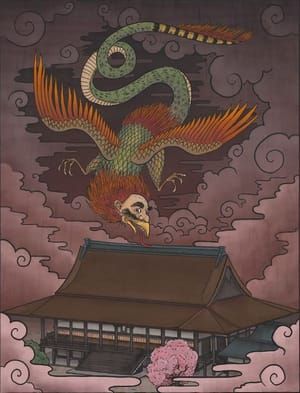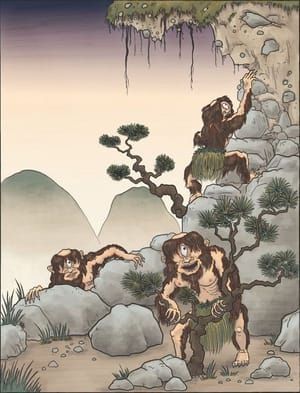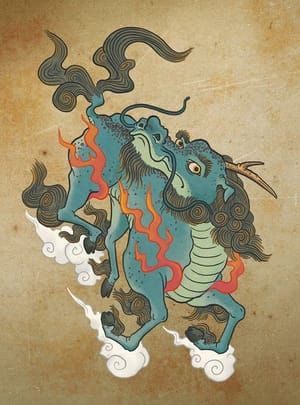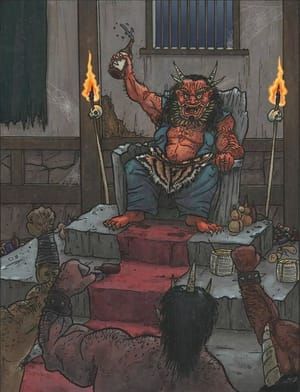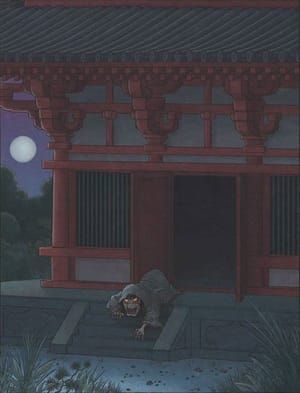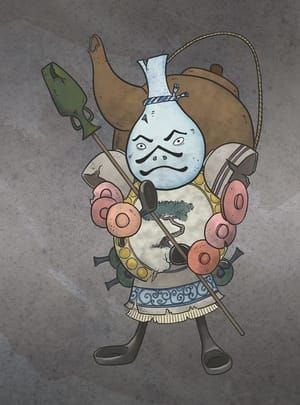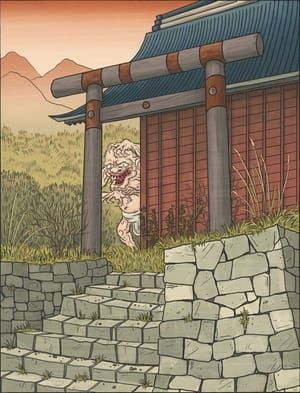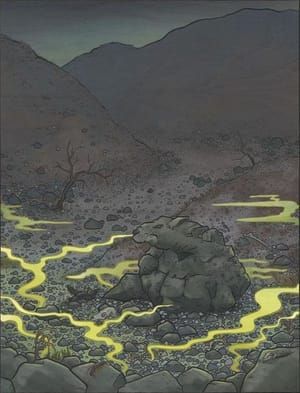
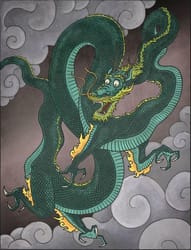
Tatsu, 2013
Matthew Meyer
龍
Tatsu, Japanese dragons, are very similar in appearance to the dragons of China and the rest of the world. They have long, scaled bodies, serpentine tails, sharp teeth and claws, and often have horns, antlers, spines, and beards. They are strongly connected to water – be it rain, rivers, seas, or oceans – and are considered to be water gods. Some have multiple limbs or heads, and many disguise themselves as humans and are never seen in their natural forms.
Tatsu live in splendid palaces at the bottom of deep seas, or in other secluded places. They usually live far from human-inhabited areas, but occasionally they live near Buddhist temples. They hoard vast amounts of treasure and keep powerful magical artifacts in their homes, occasionally allowing worthy heroes to visit them, or lending their magical items to noble warriors. Many are great villains, tormenting mankind out of spite, while others are pure and kind, offering their wisdom and power to those seeking it.
Tatsu rarely concern themselves with human affairs unless they affect them directly, but they do accept worship and sacrifices from humans. Many temples maintain the holy grounds of local dragons, and countless Japanese make pilgrimages to holy mountains inhabited by tatsu every year. Tatsu receive prayers for rain, protection from floods, and other water-related requests. Fireworks festivals, ritual dragon dances, and other local celebrations in honor of these dragon gods occur all over the Japanese islands.
Tatsu are one of the oldest supernatural creatures known in Japan; the first recorded stories go back to the Kojiki and the Nihongi, the earliest written accounts of Japanese history and mythology. Over the centuries, more dragon legends were imported from other countries, incorporating the Chinese long and Indian naga into Japanese mythology. Today’s Japanese dragons are an amalgamation of these imported myths with the indigenous water deities of prehistoric Japan.
Matthew Meyer
artistArthur
Wait what?
